Brian Eno’s journey from humble beginnings to his first major breakthrough in mainstream music is a fascinating story of artistic curiosity, experimentation, and innovation.

Humble Beginnings
Brian Peter George St. John le Baptiste de la Salle Eno was born on May 15, 1948, in Melton, Suffolk, England. He grew up in a working-class family; his father was a postal worker and clock and watch repairman. His interest in music began early, partly inspired by the do-it-yourself ethos of his family's background.
Eno attended Ipswich Art School and later Winchester School of Art, where he was exposed to avant-garde and experimental art movements, including Dadaism, Fluxus, and John Cage’s conceptual compositions. These influences shaped his approach to sound and music, as he became more interested in the textures and possibilities of sound rather than traditional musicianship.
Early Musical Exploration
In the late 1960s, Eno began experimenting with tape machines and synthesizers, which were still relatively new at the time. He was drawn to minimalism and ambient soundscapes, experimenting with looping techniques and tape delay systems.
Around 1970, he moved to London and became involved in the underground art and music scene. He met Andy Mackay, a saxophonist and oboist, who invited him to join Roxy Music—even though Eno was not a traditional musician.
Breakthrough with Roxy Music (1971-1973)
Eno joined Roxy Music in 1971 as a non-performing member handling synths, processing sounds, and adding electronic textures. While Bryan Ferry was the frontman, Eno’s sonic experimentation helped shape the band's glam rock-meets-avant-garde sound.
He played a crucial role in their first two albums:
"Roxy Music" (1972) – Their debut album was a major success, peaking at No. 10 on the UK Albums Chart.
"For Your Pleasure" (1973) – This album, featuring the hit Do the Strand, was even more experimental and solidified their place in the glam rock movement.
Though Roxy Music was gaining mainstream success, Eno’s experimental approach clashed with Ferry’s more structured vision. By 1973, tensions led to Eno leaving the band.
Breakthrough as a Solo Artist (1973-1974)
After leaving Roxy Music, Eno fully embraced his experimental side and launched a solo career. His first two albums merged art rock with tape loops, electronic effects, and unconventional song structures:
"Here Come the Warm Jets" (1974) – A critically acclaimed album blending glam rock, punk energy, and electronic soundscapes. The single Baby’s on Fire became a cult favorite.
"Taking Tiger Mountain (By Strategy)" (1974) – A more conceptually driven and experimental album, further establishing Eno as an innovator.
These records gained a strong following and marked his first true breakthrough into mainstream recognition, though his later ventures into ambient music and production would make him even more influential.
Legacy Begins
By the mid-1970s, Eno transitioned into ambient music, pioneering the genre with albums like "Discreet Music" (1975) and "Ambient 1: Music for Airports" (1978). He also became an in-demand producer, working with David Bowie (Berlin Trilogy), Talking Heads, and U2—further cementing his place in music history.

Brian Eno in the Late 1970s: The Birth of Ambient Music & Legendary Collaborations
After his initial breakthroughs in the early '70s with Roxy Music and his first solo albums, Brian Eno fully embraced experimental music in the late 1970s, pioneering ambient music and collaborating with some of the most influential artists of the era.
This period saw him shift from art rock to soundscapes, minimalism, and production work that shaped modern music.
The Birth of Ambient Music (1975-1978)
In the late '70s, Eno moved away from conventional song structures and developed his concept of “ambient music”—a genre designed to create atmospheric, immersive soundscapes rather than focus on melody or rhythm.

🌊 Key Ambient Albums:
"Discreet Music" (1975) – Considered the blueprint for ambient music, this album was based on generative music techniques, where sounds evolved through loops and chance operations.
"Ambient 1: Music for Airports" (1978) – A groundbreaking release, designed to create a calming, environmental sound that could exist in the background without demanding attention. This album coined the term "ambient music" and became a milestone in electronic sound design.
"Ambient 2-4" (1979-1982) – Eno expanded the ambient series, collaborating with musicians like Harold Budd and Laraaji, further deepening the genre.
His ambient work was inspired by minimalist composers (John Cage, Erik Satie, Steve Reich) and his growing interest in Eastern philosophy, chance operations, and generative music.
The Berlin Trilogy with David Bowie (1976-1979)
While developing his ambient concepts, Eno also collaborated with David Bowie on his legendary "Berlin Trilogy", bringing experimental textures to rock music.

🎸 The Berlin Trilogy Albums:
"Low" (1977) – A radical departure for Bowie, blending electronic instrumentals (Side B) and fractured rock (Side A). Eno introduced synth drones, tape loops, and non-traditional structures.
"Heroes" (1977) – This album included one of Bowie's most iconic tracks, Heroes, which featured Eno's synth work and atmospheric layering.
"Lodger" (1979) – The most avant-garde of the trilogy, incorporating world music influences and more abstract production techniques.
💡 Impact: These albums were hugely influential in shaping post-
punk, new wave, and electronic music—inspiring bands like Joy Division, Talking Heads, and Depeche Mode.
Eno and Talking Heads (1978-1980)
In 1978, Eno teamed up with Talking Heads, producing "More Songs About Buildings and Food" (which included the hit Take Me to the River). His collaboration with David Byrne led to even more experimental music.
🎶 Key Eno-Talking Heads Works:
"Fear of Music" (1979) – Darker and more percussive, with Eno adding textured synths and helping shape Life During Wartime and I Zimbra.

"Remain in Light" (1980) – A fusion of funk, African rhythms, and electronics, this was a landmark album in experimental rock, featuring Once in a Lifetime.
The End of the '70s: Eno's Legacy Takes Shape
By the end of the 1970s, Eno had revolutionized both rock and electronic music: ✔️ He invented ambient music✔️ He reshaped rock production with Bowie and Talking Heads✔️ He set the stage for post-punk, electronic, and world music explorations

Brian Eno in the 1980s: Producer, Innovator, and Ambient Visionary
If the 1970s saw Brian Eno inventing ambient music and redefining rock production, the 1980s cemented his role as a pioneering producer, sonic experimenter, and cultural influencer.
He shaped the sound of the decade through his groundbreaking work with U2, Talking Heads, David Byrne, and Laurie Anderson, while continuing his own ambient explorations.
U2 & The Art of Reinventing Rock (1984-1989)
By the mid-'80s, Eno was already a respected producer, but his collaboration with U2 propelled him into mainstream rock history.
🎸 Key U2 Albums Produced by Eno & Daniel Lanois:
"The Unforgettable Fire" (1984) – This album marked a huge shift for U2, moving away from their raw post-punk sound to a more atmospheric, textured, and expansive style. Songs like Bad and Pride (In the Name of Love) showcased Eno’s ability to bring dreamlike depth to rock music.
"The Joshua Tree" (1987) – One of the biggest albums of all time, featuring With or Without You and Where the Streets Have No Name. Eno helped sculpt spacious, ambient-infused rock that gave U2 a spiritual, cinematic quality.
"Achtung Baby" (1991, started in the late '80s) – Though officially an early-'90s release, Eno’s influence started in the late '80s, pushing U2 towards electronic and industrial sounds that defined their reinvention.

💡 Why It Mattered: Eno wasn’t just a producer—he challenged the band to rethink rock music, pushing them to experiment with soundscapes, delay effects, and unconventional recording techniques.

Talking Heads & My Life in the Bush of Ghosts (1981)
Eno had already produced "More Songs About Buildings and Food" (1978) and "Remain in Light" (1980) with Talking Heads, but his 1981 album with David Byrne, My Life in the Bush of Ghosts, was next-level groundbreaking.
🔊 Why This Album Was Revolutionary:
It pioneered sampling before digital samplers even existed.
It mixed African rhythms, electronic loops, and found sounds (like radio preachers and political speeches).
It influenced hip-hop, electronic music, and experimental rock for decades.
🔥 Artists like Moby, Kanye West, and Radiohead cite this album as a major influence.

Deepening the Ambient Movement (1980-1989)
Throughout the '80s, Eno expanded his ambient music experiments, moving into film scores, generative music, and conceptual projects.
🎼 Key Ambient Works:
"Ambient 4: On Land" (1982) – A dark, earthy album inspired by landscapes and memories, featuring organic textures and field recordings.
"Thursday Afternoon" (1985) – One of the first albums designed for CD format, with a continuous 60-minute evolving ambient piece.
Film Soundtracks – Scored music for Apollo: Atmospheres and Soundtracks (1983), which became synonymous with space documentaries.

🔮 His ambient music in the '80s shaped later artists like The Orb, Aphex Twin, and the entire genre of chillout/electronic ambient music.

Collaborations with Avant-Garde & Art World (1980s)
Besides rock and ambient, Eno also pushed boundaries in the avant-garde scene:
Worked with Laurie Anderson on Mister Heartbreak (1984).
Created music for art installations, working with sculptor Russell Mills.
Developed generative music techniques, influencing future AI music.
Eno at the End of the '80s: More than a Musician
By the late 1980s, Brian Eno wasn’t just a musician or producer—he was a cultural architect, shaping the future of music in ways that were still unfolding.

🎯 Legacy of the '80s:✔️ Revolutionized rock production
(U2, Talking Heads)
✔️ Pioneered sampling (My Life in the Bush of Ghosts)
✔️ Advanced ambient and generative music✔️ Blended technology, art, and soundscapes
Brian Eno in the 1990s, 2000s, and Beyond: The Philosopher of Sound & Art
By the 1990s, Brian Eno had already shaped modern music through ambient compositions, revolutionary rock production, and avant-garde collaborations. But rather than slowing down, he expanded into technology, generative music, visual art, and deep philosophical explorations of what art truly does.
1990s: Digital Experiments, U2, and Generative Music
U2 and Mainstream Influence
Following the massive success of The Joshua Tree, U2 reinvented themselves with Eno’s help:🔥 "Achtung Baby" (1991) – Eno pushed U2 into industrial, electronic, and experimental rock territory.

This album, featuring One and Mysterious Ways, was a turning point.🔄 "Zooropa" (1993) – A more abstract, electronic album, further showing Eno’s love of sonic deconstruction.
🌍 "Passengers: Original Soundtracks 1" (1995) – An experimental album blending futuristic sound design with rock music, showing U2’s most avant-garde side.
The Rise of Generative Music
Eno was fascinated by music that evolves on its own, like an ecosystem.
🎼 "Generative Music 1" (1996) – A groundbreaking software-based music project where music changes every time it’s played.
📡 He later worked on music apps, interactive albums, and AI-generated music, influencing everything from video game soundtracks to modern ambient music platforms.
Collaborations with the Alternative & Electronic Scene
In the ‘90s, Eno influenced a new wave of electronic artists like Aphex Twin, The Orb, and Björk while also producing and collaborating with:
David Bowie – "Outside" (1995): A return to Berlin-era experimentation, mixing ambient and industrial rock.
James – "Laid" (1993) and "Wah Wah" (1994): Indie rock meets ambient textures.

2000s: The Philosopher of Art and Technology
What Does Art Do? Eno’s Ideas on Creativity
In the 2000s, Brian Eno began speaking and writing extensively about art, technology, and culture,
asking:
🔹 What is the role of art in human society?🔹 Does art serve a practical function, or is it purely for pleasure?🔹 How does technology change our creative process?
💡 One of his central ideas: Art isn’t about answers—it’s about creating better questions.
📢 Key Talks & Writings:
"A Year with Swollen Appendices" (1996) – A collection of diary entries and essays on music, technology, and the future of creativity.

TED Talks & Interviews (2000s-2020s) – Eno explored AI, art, and human creativity, arguing that randomness and improvisation are essential to artistic breakthroughs.
Eno’s Visual Art & Light Installations
🔮 Music for Visual Spaces: In the 2000s, Eno moved deeper into visual art, creating large-scale immersive installations blending sound and light.

🎨 Key Projects:
"77 Million Paintings" (2006) – A digital artwork that never repeats the same image twice, using generative algorithms.
"The Ship" (2016) – A project combining music, spoken word, and AI-driven visuals.
2010s-2020s: Eno Today – A Global Thinker & Sound Innovator
Music & Politics
🎵 Eno continues making ambient, generative, and political music:
"Small Craft on a Milk Sea" (2010) – A mix of ambient and cinematic music.
"Reflection" (2017) – An evolving, AI-generated ambient album.
💡 Political Activism:
Supports climate action, progressive politics, and social justice.
Founded EarthPercent, a charity helping musicians fight climate change.
Eno on the Future of Art
In recent years, Eno has argued:🧠 AI will not replace artists but will help us make more unexpected creative choices.🌍 Art should focus on changing perspectives, not just aesthetics.🎼 Music will become increasingly fluid and infinite, rather than being trapped in fixed recordings.
Legacy: Why Eno Still Matters
✔️ Invented ambient music & generative music.✔️ Transformed rock production (Bowie, U2, Talking Heads).✔️ Merged music, technology, and philosophy.✔️ Revolutionized visual art with generative paintings.✔️ Continues shaping the conversation about AI, creativity, and the role of art.
Brian Eno on the Future of Music & Art: Generative, Infinite, and Transformative
Brian Eno has spent decades rethinking how music and art evolve, and his predictions for the future are deeply tied to technology, AI, generative processes, and societal transformation. He sees music and art as ever-changing, infinite, and interactive, breaking free from traditional structures.
Let’s explore his vision for the future of music and art, based on his writings, talks, and experimental projects.
The Future of Music: Generative, Adaptive, and Infinite
Music Will No Longer Be Fixed – It Will Be Ever-Changing
📡 Key Idea: Instead of static songs and albums, music will be generative and ever-evolving, meaning no two experiences will be the same.
💡 Eno’s Thought: "The next step in music is something that grows and changes over time, adapting to the listener, the environment, and even emotions."
🔄 Examples of This Idea in His Work:
"Music for Airports" (1978) – A forerunner to generative music, creating an endless, immersive atmosphere.
"Reflection" (2017) – An AI-driven ambient album that changes over time.
"Bloom" (2008, iOS app) – An interactive music app where the user co-creates an evolving composition.
🚀 The Future:
Playlists will become fluid, generative ecosystems that adapt to our moods and surroundings.
AI will assist musicians in creating self-perpetuating sound environments rather than just linear tracks.
Music will be more like an infinite game than a finished product.
AI Will Become a Creative Partner, Not a Replacement
🤖 Eno believes AI will act as a “co-composer” rather than replace human musicians.
🔍 His View: "What makes music exciting isn’t perfection—it’s surprise. AI can help artists discover ideas they wouldn’t have thought of on their own."
🎵 How This Is Already Happening:
AI-generated compositions (Google’s Magenta, OpenAI’s Jukebox).
Interactive music experiences (AI remixing songs in real-time based on listener feedback).
AI-driven improvisation (AI playing alongside human musicians, adding unexpected layers to live performances).
The Death of Traditional Albums & the Rise of “Living” Music
🛑 Fixed albums will become less relevant as music becomes more interactive and non-linear.
🔊 Possible Future:
Artists might release evolving albums that change over months or years.
Fans might become active participants, tweaking and reshaping music based on personal preferences.
Music will be more like software—constantly updating and growing.
🌎 Eno’s View: "Imagine a piece of music that you experience differently every time, depending on where you are, the weather, or even your own heartbeat."
🎶 A Glimpse of This Future:
Spotify AI playlists that customize music to your emotions.
Games like No Man’s Sky, where the soundtrack changes dynamically based on player choices.
Ambient rooms & AI-generated soundscapes, where the music adapts to the environment.
The Future of Art: Generative, Interactive, and Evolving
Art Will Be Generative and Never Finished
🎨 Eno’s Concept: "Why should a painting always look the same? What if it could constantly evolve, like a living organism?"
🔮 Key Innovations:
"77 Million Paintings" (2006) – A generative digital artwork that never repeats the same image.
AI-driven art installations that create new patterns, colors, and forms in real-time.
💡 The Future:
Museums may feature “living” paintings that evolve based on time of day, weather, or visitor interaction.
Digital art pieces may grow and change, rather than being static objects.
Artists may collaborate with AI-driven creative tools, generating infinite variations of their work.

🖥️ Real-World Example:
Google’s DeepDream creates evolving, AI-generated images.
Interactive installations like Refik Anadol’s AI-driven projections.
Artists Will Become Experience Designers, Not Just Creators
🧠 Eno predicts artists will move beyond creating objects and instead design full sensory experiences.
🔊 Example: Instead of painting a static image, an artist might create a room where visuals, sounds, and even scents evolve together.
🚀 Possible Future:
Art as a space: Museums turn into generative environments where no two visits are the same.
Music that responds to your emotions: AI sensors read your mood and change the artwork/music accordingly.
Augmented Reality (AR) & Virtual Reality (VR) art spaces: Instead of a painting, you step inside a changing, evolving digital artwork.

The Future of Creativity & Culture
Creativity Will Become More Collaborative & Decentralized
Eno sees the future of creativity as a network, where artists, AI, and audiences interact in new, unexpected ways.
🤝 His View:
Artists will share and remix ideas more fluidly rather than working in isolation.
Crowdsourced and AI-assisted art will blend human intention with machine intelligence.
Music & art will be more participatory, allowing audiences to co-create experiences.
🔹 Real-World Example:
Open-source art/music platforms where anyone can contribute, remix, and evolve the work over time.
AI helping generate ideas, but human artists still making final choices.
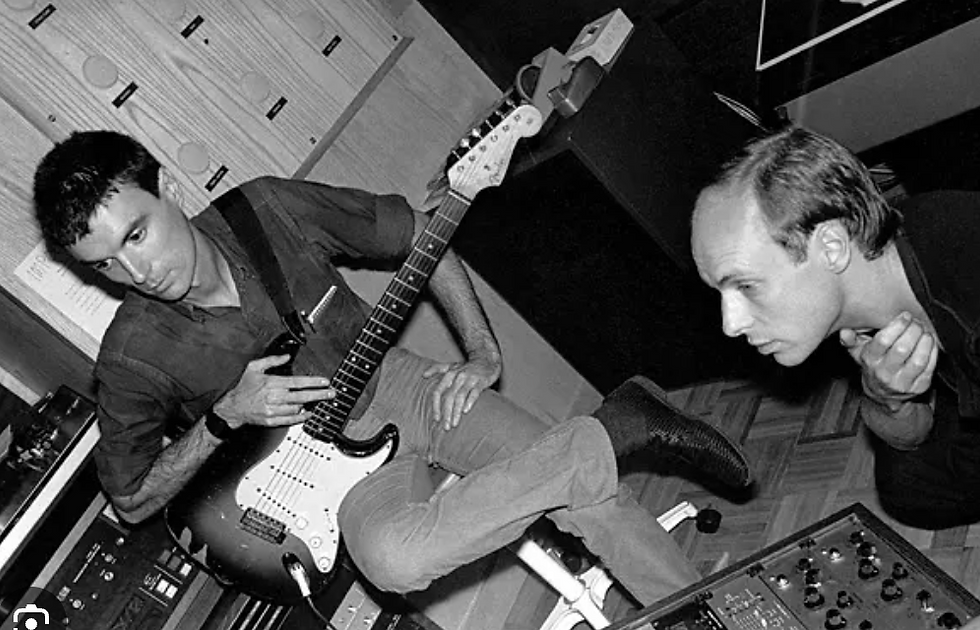
What Art and Music Will Do in the Future
🔮 Eno’s Ultimate Question: “What does art do?”
For Eno, art isn’t just about creating something beautiful—it’s about changing how we think, feel, and interact with the world.

✅ Art will challenge our assumptions.
✅ Music will be an environment, not just a product.
✅ Technology will enhance creativity, not replace it.
✅ The role of the artist will shift from “creator” to “experience designer.”
💡 As Eno says: “Art gives you permission to be different. The future of art is about opening up new ways of seeing, listening, and being.”
Brian Eno on Arts in Education: Creativity as a Core Human Skill
Brian Eno has been a strong advocate for arts education, arguing that creativity is not just for artists—it’s an essential human skill that should be at the heart of education. He believes that art teaches problem-solving, adaptability, and lateral thinking, which are crucial in a rapidly changing world.

Here’s a breakdown of his key ideas on arts in education and why he believes the arts are more important than ever.
The Problem: Education
Overvalues Science & Undervalues Art
🛑 Eno criticizes modern education systems for placing too much emphasis on STEM subjects (science, technology, engineering, and math) while treating the arts as optional or secondary.

💡 His View: "The arts are often dismissed as a luxury, but in reality, they are the foundation of creative thinking, which is essential in science, business, and innovation."
🚀 Why This Matters:
The most groundbreaking scientists, inventors, and entrepreneurs often have a background in music, painting, or literature.
Creativity is needed in every field, not just in the arts.
🔹 Example:
Steve Jobs credited his success to his love of calligraphy and design, which shaped Apple’s aesthetic.
Albert Einstein played the violin and saw a direct link between music and theoretical physics.

Art Teaches "Thinking Like an Artist"—Which is Essential for the Future
The Key Skills That Art Develops:
🎨 1. Improvisation & Adaptability – Learning to think on your feet and adjust to unexpected challenges.
💡 2. Lateral Thinking – Making connections between seemingly unrelated ideas, leading to innovation.
🧠 3. Risk-Taking & Embracing Failure – Artists experiment constantly; failure is part of the process, which is vital in any field.🎭 4. Empathy & Emotional Intelligence – Art helps people understand different perspectives and cultures.
📢 Eno’s Take: "Art education isn’t about making people into artists—it’s about making people more imaginative, adaptable, and curious about the world."

Creativity & Arts Are Essential for the Future of Work
📡 Eno believes that in a world increasingly dominated by AI, automation, and algorithms, the uniquely human skills developed through the arts will be more valuable than ever.
🔹 His Argument:
Jobs that require rigid, repetitive tasks will be automated.
The future belongs to those who can think creatively, problem-solve, and imagine new possibilities.
The best innovators will be those who understand both technology and art.
💡 "The future of work isn’t about memorizing facts—it’s about making connections between ideas that haven’t been connected before."

📢 Eno’s Big Question: "Are we teaching kids to be factory workers or to be creators and thinkers?"
His Solution: Rethinking Education to Prioritize Creativity
🛠️ Eno suggests the following shifts in education:
✅ Make Art & Music Core Subjects, Not Extras
🔹 Instead of cutting art programs, schools should integrate music, painting, theater, and storytelling into everyday learning.
🎼 Music and math should be taught together—since both involve patterns, structures, and improvisation.

✅ Teach Art as a Way of Thinking, Not Just a Skill
📢 "Art isn’t just about making pretty pictures—it’s about learning how to experiment, make mistakes, and see the world in new ways."
💡 He wants schools to emphasize:
Creative problem-solving
Open-ended exploration
Interdisciplinary learning (combining art, science, and technology)

✅ Encourage Play & Experimentation
🔹 Eno believes that traditional education kills curiosity by forcing students to find "correct" answers instead of exploring multiple possibilities.
🎭 His solution: Schools should be more like art studios, where students can experiment and create, rather than just memorize.

Real-World Examples of His Influence on Arts Education
📚 Supporting the Arts in Schools
Eno has worked with organizations that support creative education, like The Paul Hamlyn Foundation, which promotes music in classrooms.
He has also been involved in projects that bring music and arts into underprivileged communities.
🎓 Lectures & Talks
He has given talks at universities and institutions, encouraging artists, scientists, and technologists to collaborate.
🔬 Supporting STEAM (Science, Technology, Engineering, Arts, and Math) Instead of Just STEM
He believes the arts should be fully integrated into tech education, rather than being treated as separate subjects.

Why This Matters Now More Than Ever
🌎 In a world of automation, AI, and constant change, creativity is the most important skill humans have.
📢 Eno’s Message:
"The education system should be focused on making people more creative, adaptive, and imaginative."
"Art isn’t a luxury—it’s how we learn to see the world differently and invent new futures."
"If we don’t value the arts in education, we are training future generations to be consumers, not creators."

Brian Eno’s Legacy: Inspirations & Influence
Brian Eno is one of the most influential artists, producers, and thinkers of the modern era. His legacy stretches far beyond music—he has shaped visual art, technology, philosophy, and education, leaving a profound impact on multiple generations of artists.
Let’s explore:

Who Inspired Brian Eno?
Eno’s creative vision was shaped by a diverse range of influences, from avant-garde composers to visual artists, philosophers, and scientists.
🔹 Experimental & Avant-Garde Composers
🎼 John Cage – Introduced the idea of chance in music and letting randomness shape a composition.🎻 Erik Satie – A pioneer of “furniture music,” which influenced Eno’s ambient soundscapes.🎧 Steve Reich & Terry Riley – Minimalist composers who used loops and repetition, shaping Eno’s approach to generative music.

🔹 Artists & Thinkers
🖼️ Marcel Duchamp – Questioned what art could be, which influenced Eno’s conceptual approach.📡 Marshall McLuhan – Media theorist who saw technology as an extension of human perception—a big theme in Eno’s work.📚 Buckminster Fuller – A visionary designer who believed in systems thinking and creative problem-solving.

🔹 Sci-Fi & Technology
🚀 J.G. Ballard – A writer who explored the psychological effects of technology, music, and modern life.💾 Cybernetics & Systems Thinking – Eno was fascinated by how systems evolve, which led to his generative art & music.
🌍 Eno’s Philosophy:
"The role of the artist is to create worlds, not just objects."
"Art is a tool for re-imagining reality and changing how we think."

Who Has Eno Inspired?
Eno’s influence spans music, art, and technology, shaping some of the biggest names in creative culture.
🔹 Musicians & Producers
🎸 David Bowie – Collaborated with Eno on the Berlin Trilogy, pioneering a new era of experimental rock.🎤 U2 – Eno helped reinvent their sound, blending ambient textures with rock.🖥️ Aphex Twin, Björk, & Radiohead – Electronic and alternative artists deeply inspired by Eno’s use of texture, loops, and soundscapes.🎛️ Kanye West – Uses repetition, minimalism, and ambient textures, which are hallmarks of Eno’s influence.

🔹 Visual Artists & Designers
🎨 Refik Anadol – Creates AI-driven, generative artworks inspired by Eno’s concept of “evolving paintings.”📱 Jonathan Ive (Apple’s Chief Designer) – Cites Eno’s approach to simplicity and elegance as an influence on Apple’s design philosophy.

🔹 Filmmakers & Game Designers
🎥 Denis Villeneuve (Director of Arrival & Dune) – Uses ambient soundscapes inspired by Eno’s work.🎮 Video Game Designers (e.g., No Man’s Sky, Journey) – Create ever-changing, procedural soundtracks influenced by Eno’s generative music.

🔹 Technology & AI Thinkers
🤖 Brian Eno & AI Creatives – His work in generative music has directly influenced AI-powered creative tools, shaping the future of interactive art.
What Is Brian Eno’s Legacy?
🔵 Reinventing Music
Invented ambient music – A genre that transforms space and mood, influencing film scores, video games, and relaxation music.
Popularized generative music – A system where music evolves rather than being static.
🎶 Without Eno, there would be no lo-fi playlists, AI music generators, or interactive music apps.

🎨 Blurring the Line Between Music & Art
Created generative visual art, where paintings evolve over time.
Explored the relationship between sound, technology, and human perception.
💡 Eno’s Influence: Today, many artists use AI, interactive visuals, and sound installations inspired by his philosophy.

🤖 Bridging Art & Technology
Eno was one of the first artists to see AI and computers as creative partners rather than just tools.
His experiments with music apps, software, and AI-driven art have paved the way for today’s creative technology movements.
🔹 His Ideas Live On In:
AI-generated music (Spotify’s AI playlists, OpenAI’s Jukebox).
Generative art (Refik Anadol, digital installations).
Evolving video game soundtracks (No Man’s Sky, Elden Ring).

🎓 Championing Arts Education
Advocated for integrating creativity into schools, arguing that art teaches problem-solving, adaptability, and new ways of thinking.
Helped shape the STEAM movement (Science, Technology, Engineering, Arts, Math), which emphasizes the importance of art in education.
🎤 Eno’s Message: “We need more creative thinkers, not just workers. Art teaches people how to think in new ways.”

ENO's Legacy inspires
the musical magic of 'MATSU'
Brian Eno’s pioneering approach to sound design, ambient textures, and generative music directly inspires the sonic landscapes of Matsu, shaping its fusion of ancient tradition and futuristic experimentation.

His philosophy—treating music as an evolving system rather than a fixed structure—resonates deeply with Cameron Scott, Matsu’s musical director, who applies modern production techniques, holographic soundscapes, and improvisational layering to craft immersive experiences.
Just as Eno transformed the sound of Bowie, U2, and Coldplay by pushing creative and technological boundaries, Matsu harnesses cutting-edge sound engineering, live-looping, and spatial audio to bridge mythology, Yokai-inspired storytelling, and interdimensional sound journeys. Eno’s ethos—where music is not just heard but felt as an environment—continues to inspire Matsu’s mission: crafting sonic worlds that transport listeners beyond time and space.

🌎 Why Eno’s Legacy Matters Today
Brian Eno’s ideas continue to shape the future of music, art, and technology.
✅ He changed how we listen to music – From albums to sound environments.
✅ He redefined what art can be – From static objects to evolving systems.
✅ He helped bridge the gap between creativity and technology.
✅ He inspired generations of artists, musicians, and thinkers.

💡 Eno’s Big Idea: “Art isn’t just about entertainment—it’s about changing how we see the world.”


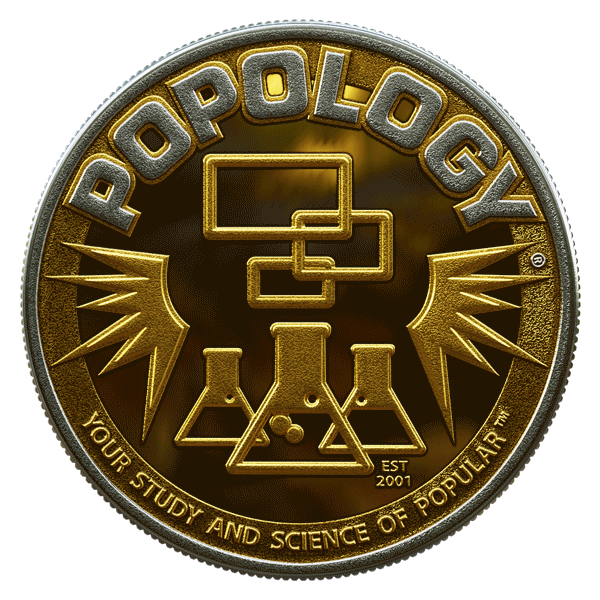





































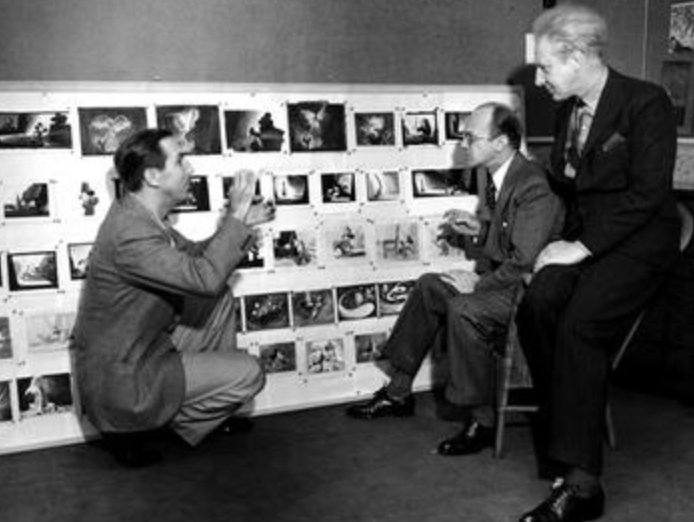































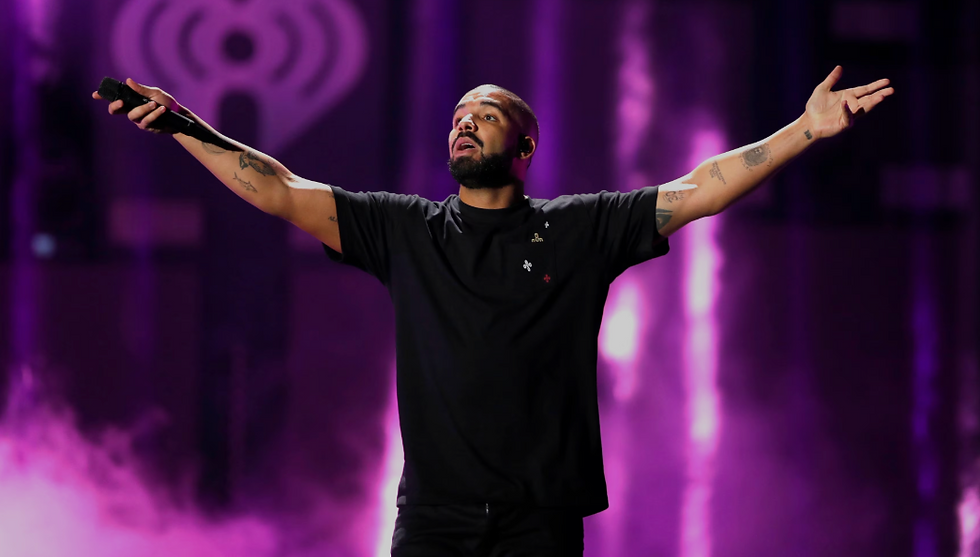






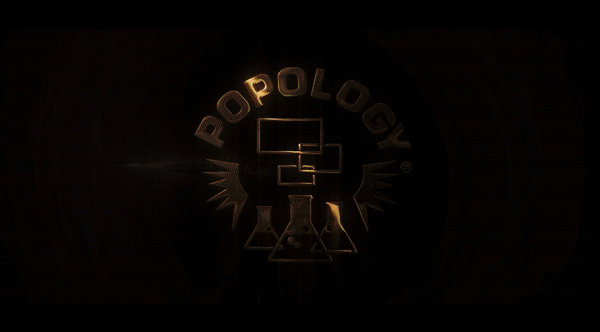
%20NEW-03.png)







